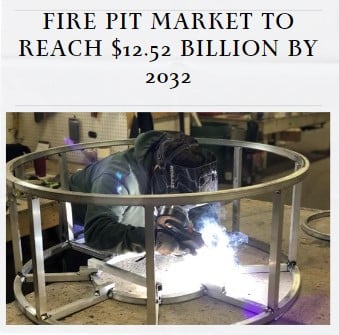The global fire pits market is expected to witness significant growth in the coming years, with a projected 12.52 billion USD during the forecast period of 2023-2030. The increasing popularity of outdoor living spaces, coupled with the rising trend of staycations and backyard parties, is expected to drive the demand for fire pits across the world.
One of the key factors driving the growth of the fire pits market is the increasing demand for decorative and aesthetically pleasing fire pits. Consumers are increasingly looking for fire pits that not only serve the purpose of providing warmth and ambiance but also add to the overall décor of their outdoor spaces. As a result, manufacturers are coming up with innovative designs and materials to cater to the evolving consumer preferences.
Another factor contributing to the growth of the fire pits market is the availability of a wide range of fuel options. While wood-burning fire pits have traditionally been the most popular, consumers now have the option to choose from gas, propane, and ethanol fire pits as well. This has expanded the market for fire pits, as consumers can now choose the option that best suits their needs and preferences.
The Asia Pacific region is expected to witness the highest growth in the fire pits market during the forecast period, due to the increasing adoption of outdoor living spaces in countries such as China, India, and Japan. The rising disposable income of consumers in the region is also expected to drive the demand for premium fire pits.
However, the high cost of premium fire pits and the availability of cheaper alternatives such as portable fire pits and DIY fire pits may hinder the growth of the market to some extent. In addition, concerns regarding air pollution and the environmental impact of wood-burning fire pits may also pose a challenge to the growth of the market.
Overall, the global fire pits market is expected to witness significant growth in the coming years, driven by the increasing popularity of outdoor living spaces and the availability of a wide range of fuel options. Manufacturers will need to keep up with evolving consumer preferences and focus on innovation to stay ahead in the competitive market.



